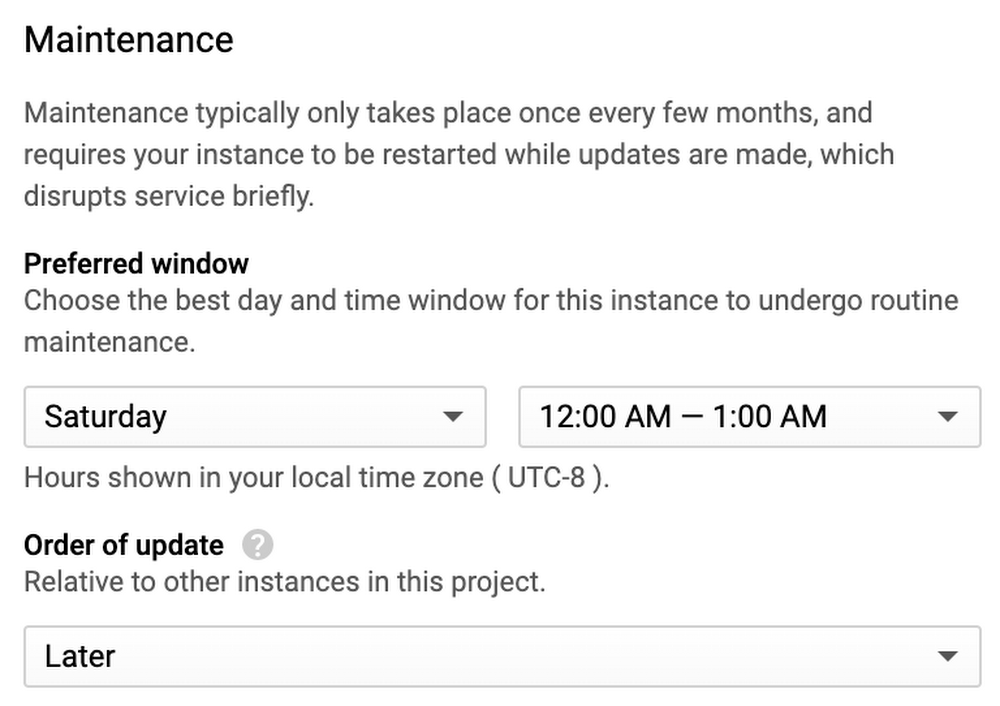Routine maintenance is a part of every database user experience—it’s how we ensure you get the performance improvements and new feature updates that keep your business running smoothly and securely. But we get it: Nobody likes downtime, no matter how brief. That’s why we’re pleased to announce that Cloud SQL, our fully managed database service for MySQL, PostgreSQL, and SQL Server, now lets you have more control over when your instances undergo routine maintenance. This includes two top-requested features: advanced notification and maintenance rescheduling.Understanding Cloud SQL maintenanceBefore describing these new controls, let’s answer a few questions we often hear about the maintenance that Cloud SQL performs.What is maintenance?To keep your databases stable and secure, Cloud SQL automatically patches and updates your database instance (MySQL, Postgres, and SQL Server), including the underlying operating system. To perform maintenance, Cloud SQL must temporarily take your instances offline.What is a maintenance window?Cloud SQL offers maintenance windows to minimize the impact of planned maintenance downtime to your applications and your business. Maintenance windows allow you to control when maintenance occurs.Cloud SQL’s maintenance windows are entirely optional. They are applied per instance, which means you can choose to enforce maintenance windows on some of your instances, but not on others. We hear that users often find maintenance windows most valuable for production instances and less valuable, or even unneeded, for test and development instances. With Cloud SQL, you’re in control.Are maintenance windows used for anything else?Cloud SQL also uses maintenance windows to deliver new functionality, including performance improvements, that requires us to temporarily take your instances offline. When new functionality and performance improvements are released, they are documented in our release notes.When does maintenance occur?The maintenance window you set defines the hour and day when an update occurs. Define your preferred maintenance window so that those updates will only happen when database activity is low, for example, on Saturday at midnight. Additionally, you can specify the order of update for your instance relative to other instances in the same project (“Earlier” or “Later”). Earlier timing is useful for test instances, allowing you to see the effects of an update the week before it reaches your production instances. What are the new controls?You can now receive notifications one week in advance of incoming maintenance activities, helping you prepare for upcoming maintenance. If needed, you can choose to reschedule maintenance after being notified. For example, you can delay maintenance up to one week, or you can apply it immediately.Getting started with Cloud SQL’s new maintenance controlsYou’ll start by setting up maintenance notifications in your project.If you haven’t already, set a maintenance window for your instance: On the Cloud SQL Instance details page, click Edit maintenance preferences, as shown here:Next, opt in to notifications: Set the Cloud SQL Maintenance Window option in the Cloud Console Communications page, and select ON under Email. When notifications are enabled, you’ll get an email seven days in advance of the maintenance event.Now, you can view upcoming maintenance for all of your instances at a glance. On the Instances page, you can add a column for maintenance. When an instance is scheduled for maintenance, the date is listed in the maintenance column.If needed, reschedule maintenance. You can choose to reschedule maintenance after being notified.For more, find a detailed overview of maintenance and setup steps in our online documentation.What’s next for Cloud SQLSupport for additional maintenance controls has been a top request from users and its launch is an important milestone for Cloud SQL. You can look forward to additional notification types, like machine-readable notifications, in the future. Have more ideas? Let us know what other features and capabilities you need with our Issue Tracker and by joining the Cloud SQL discussion group. We’re glad you’re along for the ride, and we look forward to your feedback!
Quelle: Google Cloud Platform

Published by